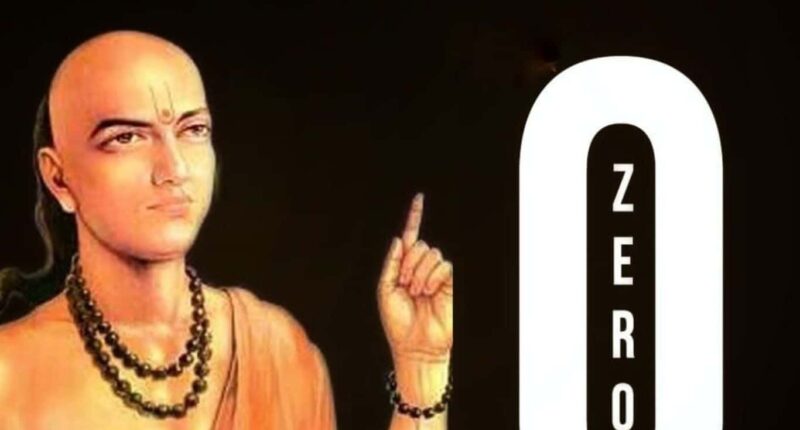Biography of Aryabhatta: Aryabhatta was an ancient Indian mathematician and astronomer who lived in the 5th century CE. He is considered as one of the earliest Indian mathematicians to make a significant contribution to the field of mathematics and astronomy. He was born in Kusumpur, India and lived in Pataliputra (modern day Patna, India).
Biography of Aryabhatta
Early life

Aryabhatta is most famous for his work, “Aryabhatiya.” In the Aryabhatiya, Aryabhata mentions that he was 23 years old in the 3600th year of the Kali Yuga. However, this does not necessarily mean that the text was written during that time. The year mentioned corresponds to 499 CE, suggesting that he was born in 476 CE. He referred to himself as being from Kusumapura or Pataliputra, which is present-day Patna, Bihar.
Education
It is widely believed that Aryabhata went to Kusumapura for further education and resided there for a period of time. Both Hindu and Buddhist legends , assert that Kusumapura was located in Pataliputra, modern-day Patna, India. A verse suggests that he served as the head of an institution (kulapa) in Kusumapura and it is speculated that he might have also been the head of the famous university of Nalanda, which was located near Pataliputra and had an astronomical observatory. It is said that Aryabhata established an observatory at the Sun temple in Taregana, Bihar, India.
Pi

Pi is a mathematical constant that represents the ratio of the circumference of a circle to its diameter. It is an irrational number that goes on forever after the decimal point and cannot be expressed exactly as a fraction.
Aryabhata was one of the first mathematicians to approximate the value of pi. He calculated it to be 3.1416, which is close to the modern value of 3.14159265. This approximation was a significant achievement for its time and demonstrated Aryabhata’s skills in mathematical calculation. Despite its inaccuracies compared to the modern value of pi, it was still a remarkable estimation and has helped to advance the field of mathematics.
Algebra

Aryabhata made significant contributions to the field of algebra. He was one of the first mathematicians to introduce the concept of negative numbers and to use them in mathematical calculations. He also solved linear and quadratic equations, which are two types of algebraic equations that involve one and two variables, respectively.
He applied algebraic equations to calculate the position of celestial bodies, such as planets and stars. This was a remarkable achievement for its time and demonstrated the versatility and practical applications of algebra.
Trigonometry

Aryabhata defined sine, cosine, and inverse sine, which are three fundamental trigonometric functions used in mathematics and science. He used these functions to calculate the height of celestial bodies and their positions in the sky, which was a major contribution to the field of astronomy.
His definitions and use of sine, cosine, and inverse sine were highly influential and helped to establish trigonometry as a branch of mathematics. His work in this area has had a lasting impact on both mathematics and astronomy and continues to be studied and used in various fields today.
Astronomy

One other work is that he calculated Earth’s circumference to be 39,375 km, which is close to the modern value of 40,075 km. He also estimated the solar year, or the time it takes the Earth to complete one orbit around the sun, to be 365.258756484 days, which is close to the modern value of 365.2422.
Further he also made several observations about the motions of planets and stars. He was one of the first astronomers to propose that the apparent motion of the stars is due to the rotation of the Earth and not the motion of the stars themselves. He also made observations about the motions of the moon and planets and used these observations to develop mathematical models to describe their movements.
Zero

He played a major role in the development of the Hindu-Arabic numeral system that is used worldwide today. He delved deeply into the properties of zero, including its function as a placeholder for large numbers and its application in mathematical calculations.
Through his work on the Hindu-Arabic numeral system, Aryabhata helped to establish its importance and widespread use in mathematics. He also created algorithms for fundamental arithmetic operations, such as adding, subtracting, multiplying, and dividing, which were crucial in the advancement of mathematics as a discipline.
Aryabhata’s contributions to the Hindu-Arabic numeral system and his extensive research on zero were significant and helped lay the foundation for modern mathematics. His work remains highly regarded and continues to be studied and utilized in various fields.
Legacy
The Aryabhata Award, also known as the Aryabhatta Award, is an annual recognition given to people who have made significant contributions throughout their career to the field of astronautics and aerospace technology in India. The statue of Aryabhata, celebrated as one of India’s earliest mathematicians and astronomers, is located at the Inter-University Centre for Astronomy and Astrophysics (IUCAA).
Aryabhata’s contributions to astronomy had a significant impact on Indian tradition and were spread to neighboring cultures through translations. During the Islamic Golden Age around 820 CE, the Arabic translation had a noteworthy influence. Al-Khwarizmi cites some of Aryabhata’s findings, and in the 10th century Al-Biruni mentioned that those who followed Aryabhata believed the Earth rotated around its axis.
Also Read: Top Indian States with Highest Women Literacy Rate



